After a steady growth, the number of scheduled seats per week has now dived, even though the beginning of 2022 brought increased numbers. We currently count 80.3 million weekly scheduled seats, representing a decrease of 5% compared to the first week of 2022. If we compare these numbers to the same week in January 2021, we can notice a rise of 36%.
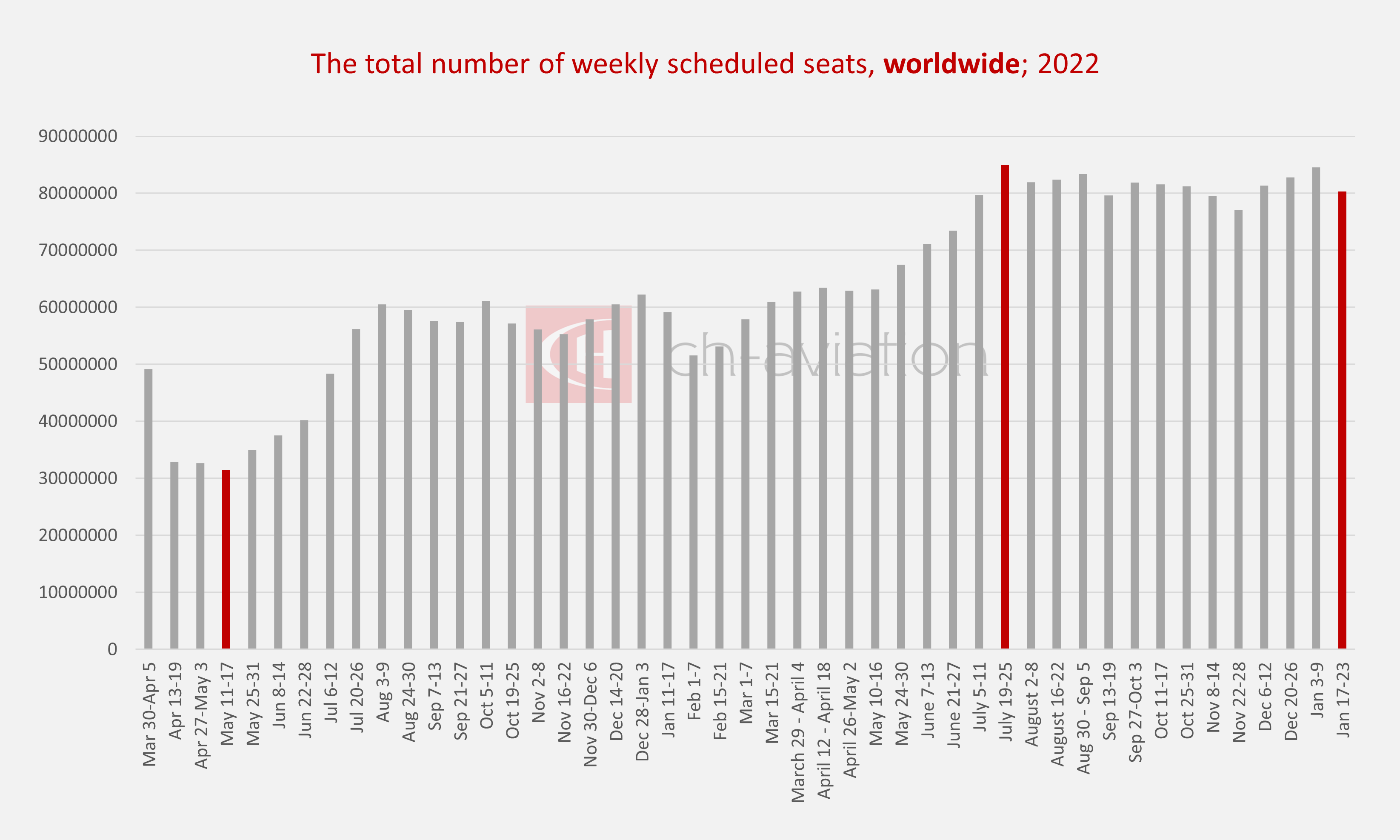
With 2.3 million weekly scheduled seats, Africa’s capacity figures have declined at the end of January 2022. However, these numbers still represent a 27.5% growth compared to January 2021.
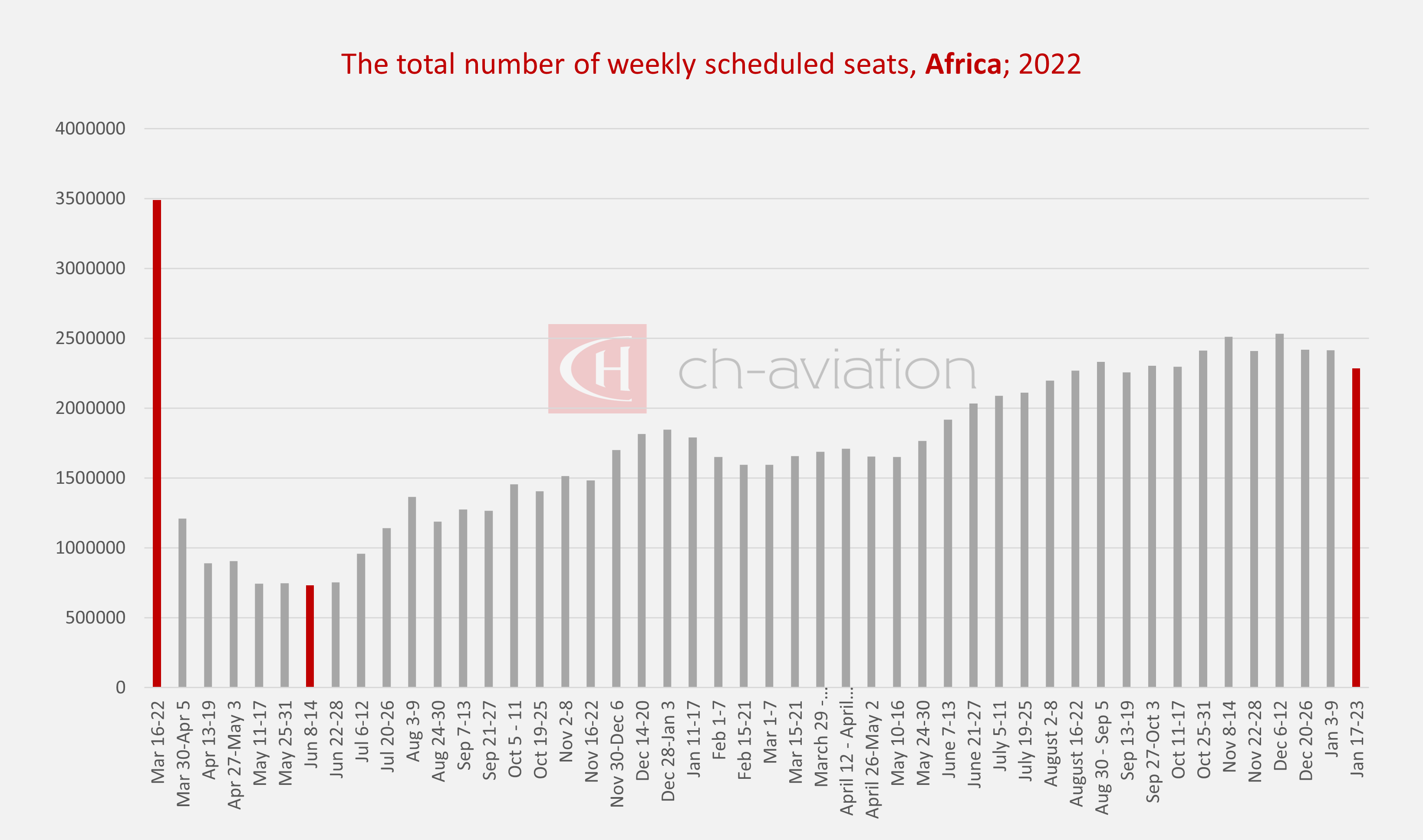
Asia is the only continent to experience an increase in capacity numbers, currently counting 34.1 million weekly scheduled seats. This represents the continent’s highest peak yet, and a 6% jump compared to the beginning of the month. Moreover, compared to the same week last year, we notice a 9% rise.
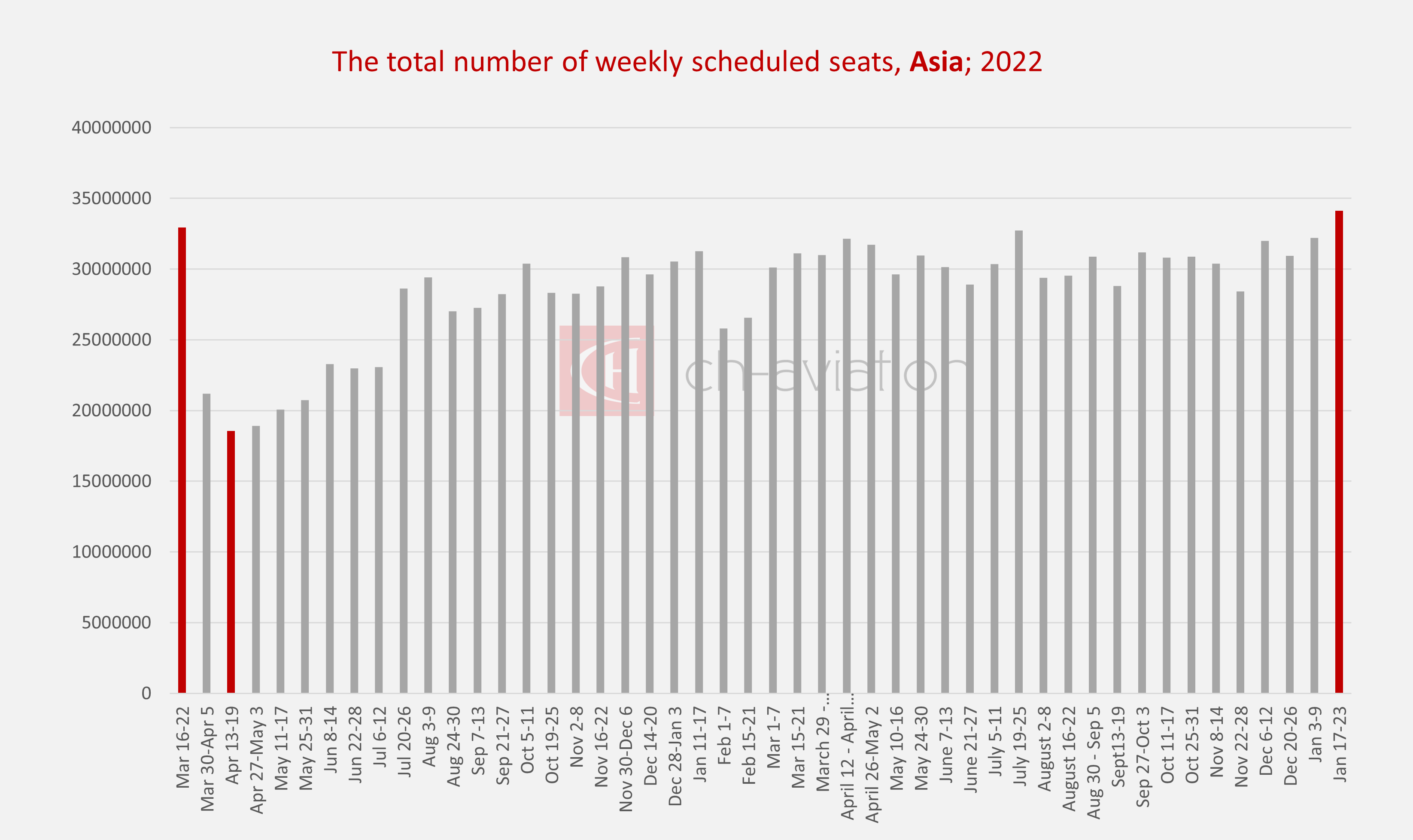
Europe’s capacity figures have plummeted. The continent saw 14.2 million scheduled seats last week, a substantial 26% drop compared to the start of January 2022. Nonetheless, compared to capacity numbers in January 2021, we notice a colossal 101% increase.
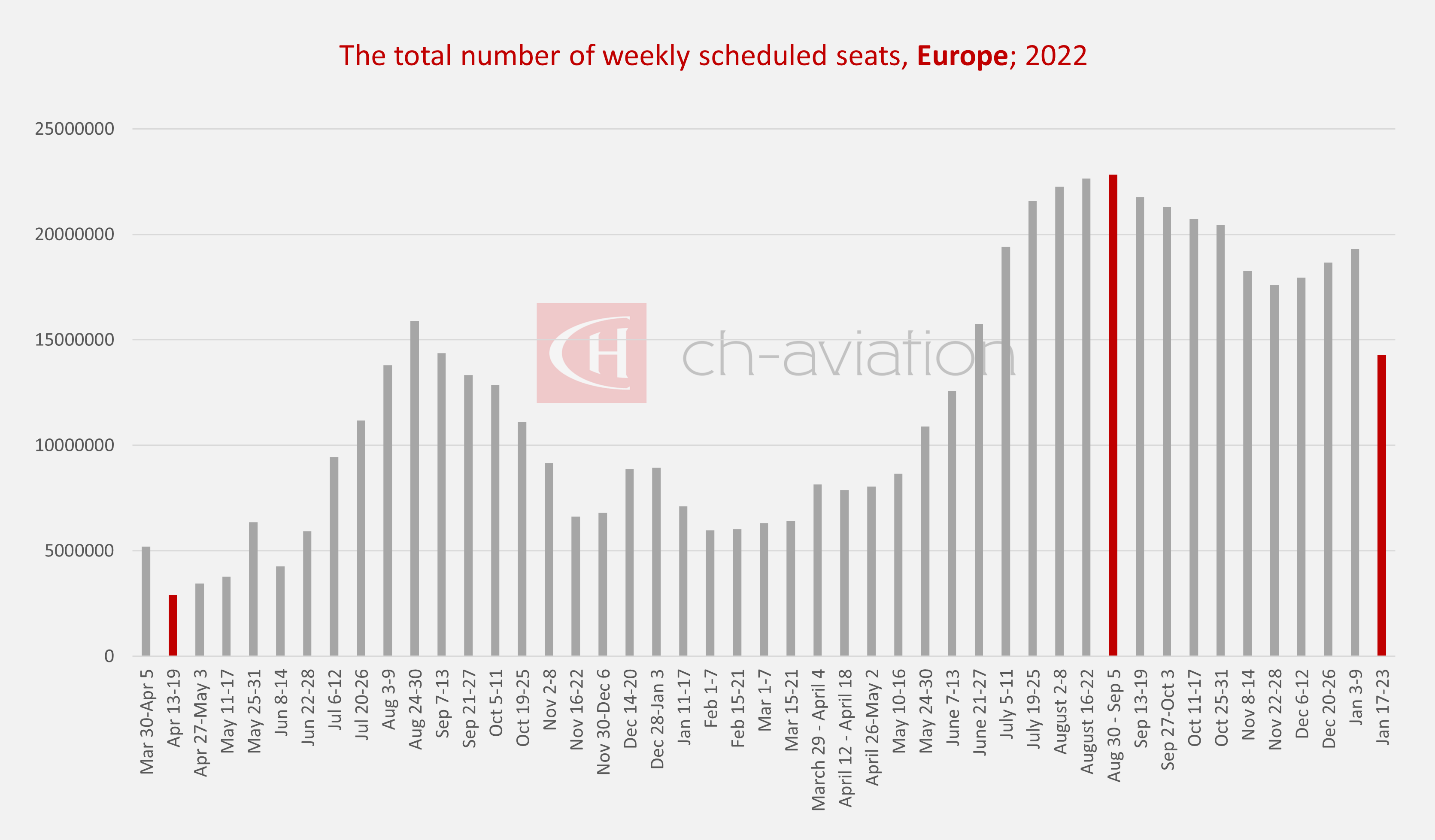
North America’s number of scheduled seats per week has also decreased at the beginning of 2022. At the end of January 2022, we count 22.9 million scheduled seats, which, compared to January 2021, represents a 61% growth.

After reaching its highest peak in December 2021 (as of the March 2020 Covid-19 outbreak), Oceania’s capacity figures are again declining. We currently count 1.7 million scheduled seats, representing a 16% drop compared to the same week last year.
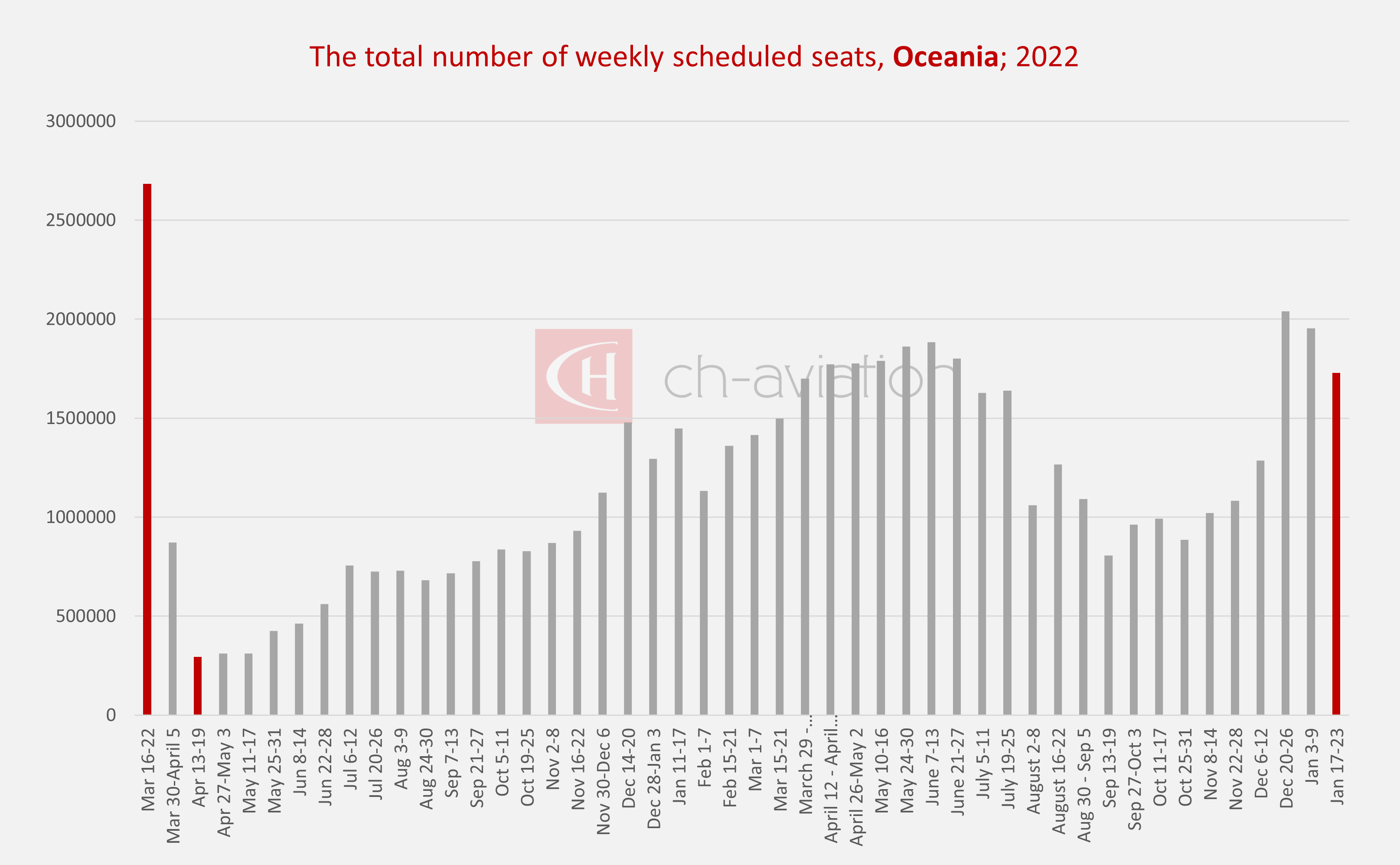
South America is the only continent to experience steady, consistent growth since April 2021, with only occasional minor drops. At the moment, we count 4.9 million weekly scheduled seats – a slight decline since the beginning of the year, but still, a substantial 47% increase compared to the same week in January 2021.

With a 92% load factor in November 2021, Russia’s Pobeda leads the list of “Top 25 Airlines with the highest load factor.” On the opposite end, Scoot sustained a load factor of just 10%.

Follow our LinkedIn account for more analyses.



